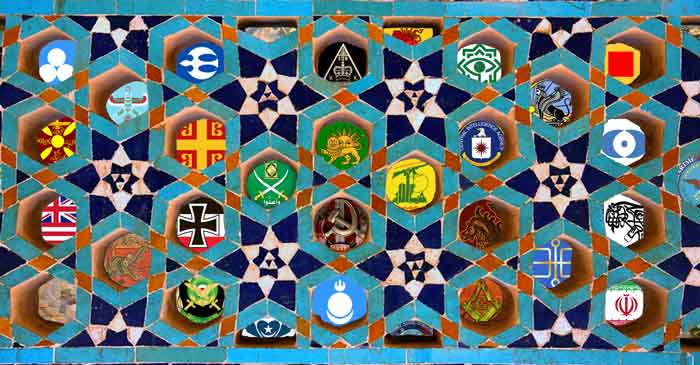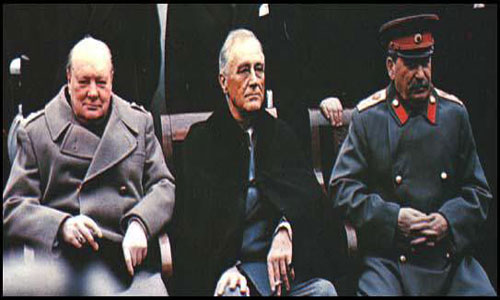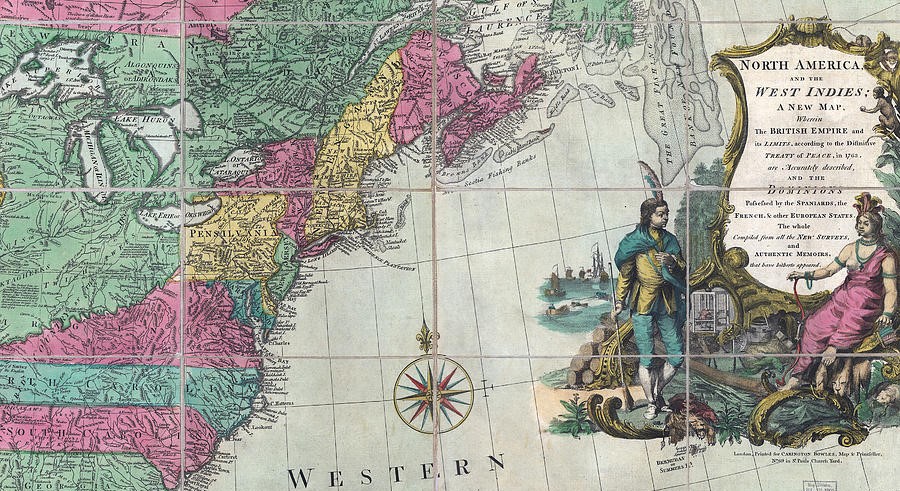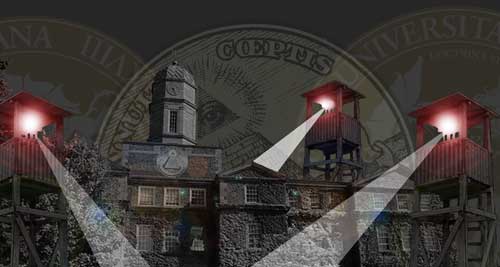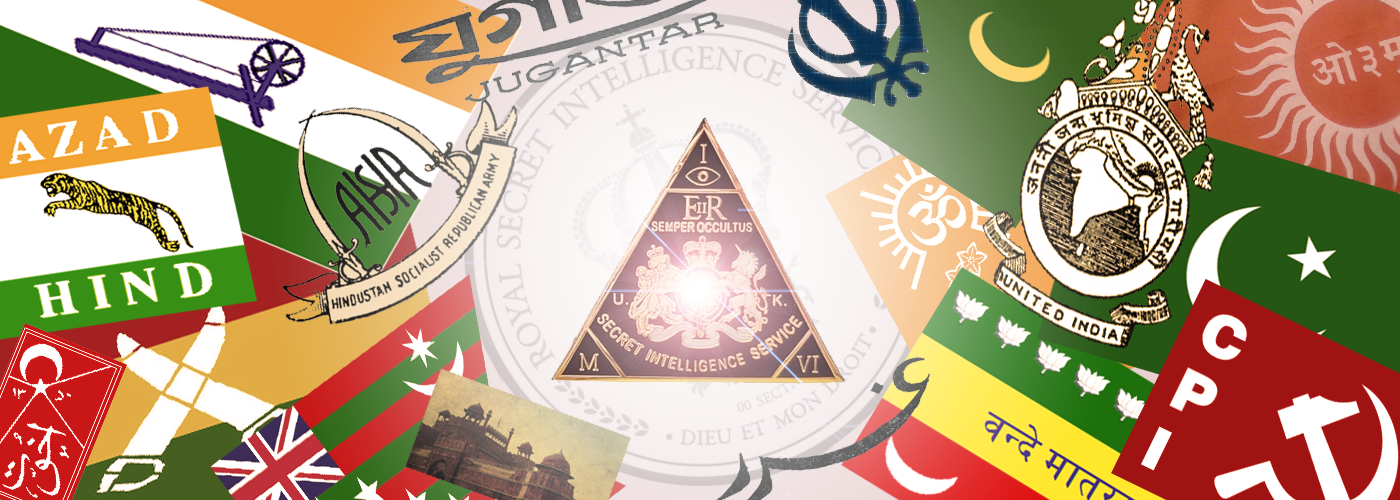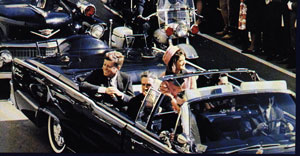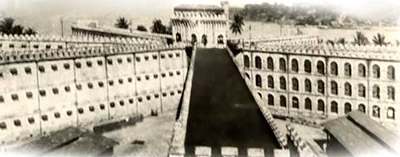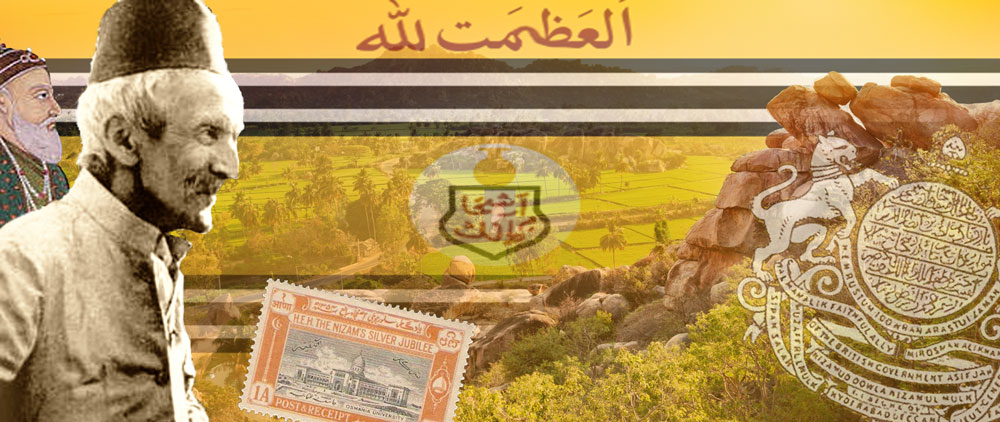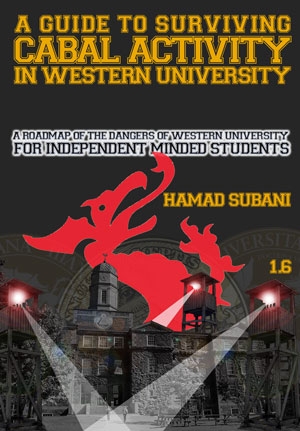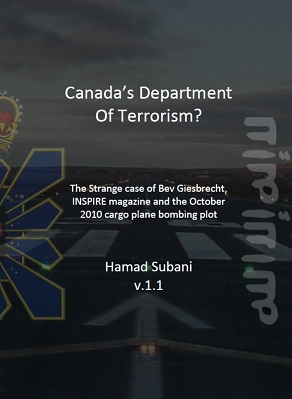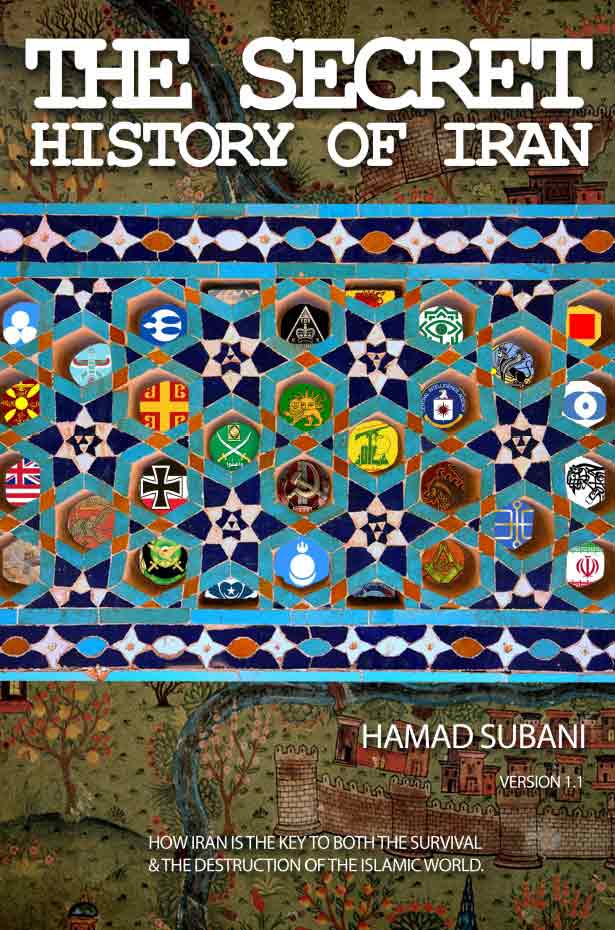A Radical New Theory on Illuminati Intrigue in the Punjab
Last Updated on July 24, 2019 by Hamad Subani
 In this post, I intend to prove that since medieval times, the Illuminati has had a connection to the Indian heartland known as the Punjab. And that they invented entirely new belief systems with sole purpose of gathering people to wage violent wars of annihilation against the Mughals. I will further prove that these secret bloodlines are still active, and continue to haunt the destinies of modern-day India, Pakistan and even Bangladesh. In the course of doing so, we discover a strange link between Mughal traitor Hakim Ahsanullah Khan, the Nawabs of Dhaka and the Muslim League. We discover another branch of secret bloodlines known as the Ispahanis, who are now the hidden kingmakers of Pakistan and Bangladesh. And discover how mysterious Urdu-speaking pseudo-intellectuals from the Punjab hijacked Urdu literary tradition, and the destiny of Pakistan.
In this post, I intend to prove that since medieval times, the Illuminati has had a connection to the Indian heartland known as the Punjab. And that they invented entirely new belief systems with sole purpose of gathering people to wage violent wars of annihilation against the Mughals. I will further prove that these secret bloodlines are still active, and continue to haunt the destinies of modern-day India, Pakistan and even Bangladesh. In the course of doing so, we discover a strange link between Mughal traitor Hakim Ahsanullah Khan, the Nawabs of Dhaka and the Muslim League. We discover another branch of secret bloodlines known as the Ispahanis, who are now the hidden kingmakers of Pakistan and Bangladesh. And discover how mysterious Urdu-speaking pseudo-intellectuals from the Punjab hijacked Urdu literary tradition, and the destiny of Pakistan.
What is the Punjab?

Love it or hate it…you can’t ignore it.
For n00bs, Punjab is a big part of both North India and Pakistan. Under the Mughals and the British, it used to be a single province, consisting of both Hindus and Muslims of Punjabi ethnicity. It has always been an agricultural goldmine. While it is prosperous, a feudal mindset is deeply ingrained in the region. The Mughals, for reasons best known to them were wary of the people of the Punjab. They preferred recruiting Hindu Rajputs for military service but always avoided recruiting Punjabis (including Muslim Punjabis). The Punjab soon emerged as a staging ground for entirely new belief systems, most prominently, the Satnamis, and the Sikhs, who seriously threatened the Mughals on a political level. The Punjabi people, especially the Sikhs, were instrumental in their support for the British during 1857, following which the British put an end to the Mughals. The Punjabi people were then prominent in military service to the British Empire, and fought in the World Wars on the British side. Following independence in 1947, the Punjab became a horrific scene of communal riots, mainly between Muslims and Sikhs, complete with instances of genocide and ethnic cleansing. Muslim Punjab went to Pakistan, and still maintains its distinct feudal mindset. People of Muslim Punjab are the main component of Pakistan’s military and bureaucracy. Indian Punjab is dominated by Sikhs, who have had an uneasy relationship with the Government of India after they participated in a post-independence struggle for independent nationhood.
The Crypto-Byzantine Timurid Bloodlines, and their Connection to the Punjab
Saiyyids of Baraha linked to Multan and Dipalpur in the Punjab
In my book, The Secret History of Iran, I touched upon Illuminati operatives installed in India by Amir Timur. To quote,
Timur quietly left India, without installing any successors or viceroys. And most historians would attribute this act of aggression to Timur’s madness.
But Timur did leave behind some special people, maybe crypto-Byzantines like him, to inherit the Tughlaq Sultanate. According to Mughal Empire founder Babur, these were the actual descendants of Amir Timur himself who held parts of the Sindh delta, and were later gifted the Sultanate of Delhi by Amir Timur. This is an unmistakable reference to Khizr Khan ibn Malik Sulaiman, who prior to taking over the Sultanate of Delhi, controlled Multan and Dipalpur. These people styled themselves as as “Saiyyids,” descendants of the Prophet of Islam. Although genuine Saiyyids tend to refrain from politics and power struggles.
Without much fanfare, Khizr Khan ibn Malik Sulaiman took up the Sultanate of Delhi fifteen years after Timur retreated back to Iran. Timur had appointed him as the governor of Multan and Punjab. He struck coins in the name of Amir Timur. Khizr Khan used a Tughlaq commander Bahlul Khan Lodi to destroy a Tughlaq loyalist, Mallu Iqbal Khan. But despite this, he was only able establish rule over Multan, Dipalpur and parts of Sindh. He and his successors constituted what became known as the Sayyid Dynasty, which ruled the Delhi Sultanate from 1414-1451. Soon, Bahlul Khan Lodi grew extremely powerful and attacked Delhi in 1443, but failed. In 1448, the Saiyyid Alam Shah was vacationing in Uttar Pradesh. One of his ministers in Delhi, Hamid Khan, invited Bahlul Khan Lodi again. Bahlul Khan Lodi managed to take Delhi without meeting any resistance. The Saiyyids were in no position to counter Bahlul Khan Lodi. And in doing so, they would lose their private estates in Uttar Pradesh (near Badaun and Sahranpur). So Alam Shah peacefully abdicated to Bahlul Khan Lodi.
Sayyid Hasan Ali Khan Barha (titled Abdullah Khan). The Saiyyids of Baraha were a mysterious cabal that did more damage to the Mughals than all of their external enemies combined together.
The Saiyyids implanted by Amir Timur remained dormant for centuries. In 1526, the Lodi dynasty was conquered by Babur, distant descendants of Amir Timur who had fled the Chaghatai Khanate because of the Genghisid Shaybanis. Babur was initially assisted in this venture by the Illuminati Safavids, who hoped to use the Mughals to supplant themselves in the Indian subcontinent. But later Mughals, especially those produced by marriage to Rajput women, distanced themselves from the Safavids. Babur inherited a country which had escaped the ravages of the Mongols and Timur. The Mughals would outdo all Islamic gunpowder empires in prosperity. They maintained a reference to Timur in the tradition of a royal myth, the likes of which monarchies find necessary to foster. Though references to Timur’s brutalities in his invasion of India were edited out in official Mughal accounts. The Timurid bloodline also helped justify unsuccessful Mughal attempts at conquering Central Asia. And Timurid cultural influence was pervasive in the Mughal dominion. Especially in coinage, wine drinking, paintings, portraits and the minbar, a specially made pedestal used by the mosque imam for Friday sermons, as well as royal patronage of Sufi orders, namely the Naqshbandiyya.
Little did these later Mughal rulers know that they were being preyed by another secret branch of Amir Timur, who saw them as nothing but interlopers. In the reign of Aurangzeb, the Saiyyids managed to infiltrate the Mughal court, posing as descendants of the Prophet. This time, they had stylized themselves as the Saiyyids of Baraha. Baraha refers to the number twelve, which also happens to be the number of tribes that constitute the Illuminati (later they became thirteen). The Saiyyids had established themselves in twelve villages in the fertile Doab region of Uttar Pradesh. Aurangzeb soon grew weary of the Saiyyids, and started regarding them with suspicion. One would expect Aurangzeb’s last will for his sons to contain detailed instructions on dealing with external foes such as the Marathas. Instead, we find the ninth item of his will devoted to precautions to be taken against the Saiyyid Brothers.
Unfortunately, Aurangzeb’s successors did not heed this advice. After Aurangzeb, the Saiyyids took over the Mughal Empire and ruled through puppets. Mughal princes who didn’t comply with them were blinded by a needle the Saiyyids always kept in handy. They auctioned off the crown agricultural lands (which were the engines of Mughal prosperity) to tax farmers. This was a major blow to the Mughal economy, and it never recovered. To consolidate their power, they even collaborated with the Maratha Peshwas, and assisted them in conquering Delhi. They were later overthrown in a violent coup, but the damage they did to the Mughal Empire was beyond repair, and far bigger than the damage done to the Mughal Empire by the Marathas, the Jats and the Sikhs combined together. Post-Mughal descendants of the Saiyyids of Baraha figured prominently in British-backed attempts at “reforming” sub-continental Muslim identity on their terms.
Nawabs of Awadh bearing no evident link to the Punjab, but still connected to the same crowd
In a 2016 article entitled The Secret History of Hyderabad State, I touched upon the Nawabs of Awadh, forerunners of the Saiyyids who continued to operate in the Awadh region of North India with vicious impunity. To quote,
Something fishy with the flag of Awadh State. The fish is a Jewish symbol.
With the fall of the Sayyid Brothers, only the Peshwas had the strength and resources to put an end to Mughal India. But this time, they no longer had the insider assistance of the Sayyid Brothers. They would have to rely on secret supporters of the Sayyid Brothers, such as the Nawab of Awadh Saadat Khan, who had established himself in the Mughal Court and had gained the trust of the Emperor. Unlike the Sayyid Brothers who became infamous for their open hostility to Mughal Emperors, the Nawabs of Awadh adopted an opposite approach. They would gain the trust of Mughal Emperors and secretly betray them. Thus, they accomplished more damage than the Sayyid Brothers. Some have also suggested the possibility that the Sayyid Brothers went underground and started operating through the Nawabs of Awadh, and indeed, the name pseudonym of the first Nawab of Awadh as “Saadat” which is a derivative of Sayyid is telling. The Nawabs of Awadh are known for establishing Shiism in North India. They built Imambaras, where Shiites would publicly practice their rituals and demonize Sunnis. The Imambaras also had mock tombs of Shiite-Muslim heroes, and this contributed to the Islamically abhorrent practice of venerating graves. They also sponsored new forms of Urdu poetry based on sad elegies, which would be recited by women with music-like chanting rhythms (marsiya). They also improvised drum-beating parades, mourning processions and street theater based on the events of Karbala. All these efforts were passionate propaganda for Shiism, which they hoped would replace mainstream Sunni Islam. Soon these practices even spread to the Hindus of Delhi, who constructed replicas of the cenotaph of Imam Hussein, and on the 10th of Muharram, threw them into rivers or buried them. As the Nawabs of Awadh grew powerful, they shifted their capital from Faizabad to Lucknow.
These accounts show the following routes taken by these Illuminati bloodlines.
Saiyyids of Baraha (Moved in alongside Amir Timur’s invasion): Sindh Punjab (Multan and Dipalpur) Twelve villages in the most fertile Doab region of Uttar Pradesh
While the Nawabs of Awadh overlap the Saiyyids of Baraha when it comes to Illuminati conspiracies and intrigues, their link to the Saiyyids of Baraha requires some digging to uncover. The first Nawab of Awadh, Saadat Khan, migrated from Nishapur, Iran. And we are told that he was a descendant of Qara Yusuf, a famous opponent of Amir Timur. It is more likely that Saadat Khan’s ancestors, being secret descendants of Amir Timur himself, infiltrated the bloodline of Qara Yusuf to destroy the Qara Qoyunlu. And sure enough, the Qara Qoyunlu were out of the picture by 1468.
In other words, we have another parallel bloodline linked to Amir Timur that established itself in Iran. This bloodline starts making inroads into Mughal India much later, through migration in the 18th Century.
Nawabs of Awadh (Migrated to Mughal India in the 18th Century): Nishapur (Iran) Awadh (Uttar Pradesh).
Identifiable Traits of these Secret Bloodlines
From the above, we can arrive at the following conclusions:
- These families were definitely not practicing Muslims, or even of Asian ethnicity. Like Amir Timur, they traced their lineage to the Byzantine rulers of Anatolia, who while being outwardly European, were in reality crypto-Jewish.
- These families were involved in a program of conquering the Indian Subcontinent.
- Since they were the actual direct descendants of Amir Timur, they had backchannels into Mughal nobility.
- In Mughal India, they always seemed to settle down in places that were known to be (and still are) agricultural goldmines, places such the Punjab, the Doab region of Uttar Pradesh. This was so that they could easily establish a state if needed and raise revenue for conscripting soldiers and starting wars.
- But since the Illuminati had lost control of the Mughals early on, these families were locked into a secret generational struggle with the Mughals. They concentrated their efforts on putting an end to the Mughals (which as we shall see, they eventually did). They were literally, the nemesis of the Mughals.
- With the arrival of the British on the scene, their roles became greatly augmented. Instead of conspiring to replace the Mughals, they joined hands with the British for the common endeavor of eradicating the Mughals and establishing the Illuminati British Empire in India.
- After the British Empire was established, they resurfaced as hidden movers and shakers in the Illuminati plot to Partition the Subcontinent.
The new Ahmadiyya Connection

The Prophet and Founder of the Ahmadiyya faith, Mirza Ghulam Ahmad was connected to the mysterious Barlas tribe.
While doing some research into modern-day Pakistan, I came across a curious piece of information. Mirza Ghulam Ahmad, the founder of the conspiratorial Ahmadiyya movement in Islam had ancestors with confirmed backchannels into Mughal Nobility. To quote Wikipedia,
Mirza Ghulam Ahmad’s lineage through his forefathers can be traced back to Mirza Hadi Beg, a descendant of the Mughal Barlas tribe. The Barlas tribe was of Turco-Mongol ancestry. In 1530 Mirza Hadi Beg migrated from Samarkand (present-day Uzbekistan) along with an entourage of two hundred people consisting ofhis family, servants and followers. Travelling through Samarkand, they finally settled in the Punjab, India, where Mirza Hadi founded the town known today as Qadian during the reign of the Mughal King Zaheer al-Din Babur, his distant relative. The family were all known as Mughals within the British governmental records of India probably due to the high positions it occupied within the Mughal empire and their courts. Mirza Hadi Beg was granted a Jagir of several hundred villages and was appointed the Qadhi (judge) of Qadian and the surrounding district. The descendants of Mirza Hadi are said to have held important positions within the Mughal empire and had consecutively been the chieftains of Qadian.
I have touched upon the Barlas tribe in page 146 of my book, The Secret History of Iran. This was the actual tribe of Amir

Why were Ahmadiyya like Chaudhry Sir Muhammad Zafarullah Khan active in the quest for Partitioning British India in the name of “Muslim Nationalism”?
Timur (but not that of Babur). In other words, this is another group of Crypto-Byzantines establishing themselves in the Punjab. Now let’s check for any additional criteria that they fulfill:
- Did they have backchannels into Mughal Nobility? See above.
- Did they establish themselves in an agriculturally prosperous area? Qadian in the Punjab (Now Indian Punjab) is sitting on an agricultural goldmine. This puts Mirza Ghulam Ahmed not far from other districts of Punjab, such as Multan and Dipalpur (present-day Pakistan), where the ancestors of the Saiyyids of Baraha originally established themselves.
- Did they wage war on the Mughals? Mirza Ghulam Murtuza, the father of Mirza Ghulam Ahmad actively supported the British against the Mughals and provided military assistance to their forces in the Rebellion of 1857.
- Did they play a role in furthering the British Empire? The Ahmadiyya movement could not have been invented to wage war against the Mughals, because they were already out of the picture. The Ahmadiyya movement emerged as an attempt to substitute genuine Islam with a bogus colonial-friendly version. Not surprisingly, many of its early converts were mysterious British gentlemen connected to the Theosophy movement. It was intended to be a parallel to the Arya Samaj in Hinduism.
- Did they play a role in the Partition? Noted Ahmadiyya Chaudhry Sir Muhammad Zafarullah Khan was prior to the Partition, one of the most vocal proponents for the creation of Pakistan through Partition and he personally led the case for a separate nation in the Radcliffe Commission. He would later resurface as Pakistan’s top diplomat.
The Ahmadiyya are an example of the Powers That Be creating an entirely new belief system to suit their needs. This could not have been the first time they did it. Now lets go back further in time to look at some new belief systems that sprouted up in the Punjab.
This got me wondering…how many more belief systems emerging from the Punjab owe their existence to the Powers That Be?
The Arya Samaj in the Punjab
Contemporary to the Ahmadiyya Movement, the Arya Samaj also saw massive growth in Punjab (though it did not originate in the Punjab). Here the movement morphed into an anti-Islamic movement, and occasionally drew antagonism from the Sikhs, thus establishing the fault lines of the future Partition. Lala Lajpat Rai was a Punjabi adherent of the Arya Samaj, who along with Bal Gangadhar Tilak and Sardar Patel constituted the three Indian leaders advocating for Partition.
The Satnamis
The Satnamis originated in Punjab as a mysterious group whose sole purpose was to engage in violent and suicidal warfare with the Mughals and capture Delhi from them. The word Satnam could be a mischievous anagram for Satan. Let’s check out what Encyclopaedia Britannica has to say about them:
Satnami sect, any of several groups in India that have challenged political and religious authority by rallying around an understanding of God as satnam (from Sanskrit satyanaman, “he whose name is truth”).
The earliest Satnamis were a sect of mendicants and householders founded by Birbhan in Narnaul in eastern Punjab [not to be confused with Narnaul in Haryana] in 1657. In 1672 they defied the Mughal emperor Aurangzeb and were crushed by his army. Remnants of that sect may have contributed to the formation of another, known as Sadhs (i.e., sadhu, “good”), in the early 19th century, who also designated their deity as satnam. A similar and roughly contemporary group under the leadership of Jagjivandas of Barabanki district, near Lucknow, was said to have been influenced by a disciple of the Sufi mystic Yari Shah (1668–1725). He projected an image of an overarching creator God as nirguna (“devoid of sensible qualities”), best worshipped through a regimen of self-discipline and by use of the “true name” alone. Yet Jagjivandas also wrote works about Hindu deities, and the elimination of caste, a central part of the Satnami creed, was not part of his message.
The most-important Satnami group was founded in 1820 in the Chattisgarh region of middle India by Ghasidas, a farm servant and member of the Chamar caste (a Dalit caste whose hereditary occupation was leather tanning, a task regarded by Hindus as polluting). His Satnam Panth (“Path of the True Name”) succeeded in providing a religious and social identity for large numbers of Chattisgarhi Chamars (who formed one-sixth of the total population of the region), in defiance of their derogatory treatment by upper-caste Hindus and their exclusion from Hindu temple worship. Ghasidas is remembered for having thrown images of Hindu gods onto a rubbish heap. He preached a code of ethical and dietary self-restraint and social equality. Connections with the Kabir Panth have been historically important at certain stages, and over time Satnamis have negotiated their place within a wider Hindu order in complex ways.
Now note the following connections
- A mysterious Sufi named Yari Shah
- Barabanki district, located in the territory of the Nawabs of Awadh. Barabanki means twelve bullies, which refers to the twelve Muslim rulers who shared the district prior to the Nawabs of Awadh. The number twelve is clearly symbolic of the twelve tribes of Israel, and this could be a reference to the original twelve villages of the Saiyyids of Baraha.
- Connections to another mysterious Sufi named Kabir. Note that Kabir was regarded as a heretic by the Muslims of his time because he subtly ridiculed Islam. Crypto-bloodlines are known to have a disdain for Islam.
But why would the Powers That Be create an entirely new belief system from the ground up rather than riling up existing religious groups against the Mughals? The answer is that both Muslims and Hindus were proving to be difficult to use against the Mughals. And therefore the necessity of creating alternate belief systems.
Based on the information we see, it is clear that the Satnamis failed their purpose as an anti-Mughal political movement, and therefore the Powers That Be were forced to experiment with other belief systems.
But why would the Powers That Be create an entirely new belief system from the ground up rather than riling up existing religious groups against the Mughals? The answer is that both Muslims and Hindus were proving to be difficult to use against the Mughals. Muslim Shiites were willing, but did not have the numbers to take on the Mughals. And therefore the necessity of creating alternate belief systems.
Early Sikhism
A discussion on the origins of Sikhism is clearly beyond the scope of this post. But the following key points should be noted.
- Sikhism was established by Guru Nanak (1469–1539) as a peaceful religion.
- The aforementioned 15th century Sufi mystery man named Kabir was connected in some way, as his verses end up in canonical Sikh literature.
- Soon enough, Sikhs were mobilized against the Mughals (or vice-versa, according to their version), and warfare against the Mughals later became an integral part of their tradition. Mughals were depicted as their ultimate nemesis in propaganda. This was not unlike the manner in which the Powers That Be made anti-Sunni rhetoric an integral part of the Shiite Muslim faith.
- The Sikhs played an instrumental role in putting an end to the Mughals by wholeheartedly supporting the British in the events of 1857.
- The Punjabi people, Sikh, Muslim and Hindu emerged as the most dependable soldiery of the British Empire. In one rather shameful incident, they even felicitated the British General Dwyer, whose reputation had been severely tainted after his role in the Jalianwala Bagh massacre. To quote,
But, Dyer and O’Dwyer had admirers in India and England. They collected Euro 26,000 and presented it to Dyer along with a golden sword. In fact, the Golden Temple management (the predecessor of the SGPC) presented Dyer a kirpan (sword) and a siropa (turban). O’Dwyer, who was subsequently shot by Udham Singh, received his own fund, towards which some of the Punjabi elite like Kunj Bihari Thapar, Umar Hayat Khan, Chaudhary Gajjan Singh and Rai Bahadur Lal Chand contributed Rs 1.75 lakh.
- While the Partition had already been set in motion by the Powers That Be, the Muslim-Sikh riots in Punjab played the most important role in convincing Muslims of the Punjab of the inevitability of Partition. Had the Muslims in Punjab said no to Partition, there would have been none. There are some theories that Sikh leaders had also been promised an independent nation by the British, and therefore in preparation, they began ethnically cleansing the Punjab of Muslims and creating majority Sikh areas so that their claim would stand.

Had the Muslims in the Punjab said no to Partition, there would have been none. Were the Muslim-Sikh riots deliberately organized to ensure they had no choice?
Mughal Traitor Hakim Ahsanullah Khan’s Kashmir Connection

The fall of Mughal Delhi to the British in 1857 was made possible by the treason of the Mughal Emperor’s physician, Hakim Ahsanullah Khan. His origins are undocumented, and remain a mystery.
While doing some research on the last Mughal Emperor Bahadur Shah Zafar, I came across his trusted physician, Hakim Ahsanullah Khan, whose treasonous dealings with the British saw the complete rout of the 1857 Revolt and the humiliating surrender and detention of the noble Emperor, thereby putting an end to the Mughals in India. It goes without doubt that the betrayal orchestrated by Hakim Ahsanullah Khan was the most damaging instance of treason the Mughals faced during 1857. Some mutineers even referred to him derisively as a “Jew.” To quote,
According to the 19th Century magistrate and writer, Fanthome, Hakim Ahsanullah Khan ran foul of the sepoys during the “Mutiny” who nicknamed him Gangaram Yahudi. There is no explanation for this derogatory name ascribed to the great hakim, except that Gangaram was a derivative for a parrot and Yahudi for a Jew. Taken together it could imply that Hakim Ahsanullah Khan parroted what was dictated to him by the “Angrez” Bahadur and Yahudi was taken to mean a renegade (since many of the so-called mutineers thought that he was secretly in league with the British).
Investigating Hakim Ahsanullah Khan further led me to stumbling onto another line of Crypto-Byzantines linked to Amir Timur. Like the Nawabs of Awadh, this line begins predictably in Iran. But in Herat, not Nishapur. It is also noteworthy that when they migrated to Mughal India in the 18th Century, they first settled in Kashmir (and are thus mistaken for Kashmiris). After his traitorous role in the events of 1857, we are told that Hakim Ahsanullah Khan quietly retires to the princely state of Baroda (linked to the Chitpavani Peshwas who are of Jewish origin) whereas other Mughal nobles ended up being executed by the British. And we never hear from him again. His family still maintains possession of his luxurious haveli in Delhi till this day (whereas other Mughal nobles ended up having their properties confiscated and Muslim people were barred from entering Delhi following 1857). To quote,
I was inside the haveli of Hakim Ahsanullah Khan, a building that dates back to the 1730’s. The hakim was royal physician to Mughal emperor Bahadur Shah Zafar and a contemporary of the legendary Persian poet, Mirza Ghalib. He was born in 1797, the same year as Ghalib. Ahsanullah Khan’s Afghan ancestors came from Herat, reached the Dal Lake in Kashmir, and then shifted base to Delhi where most of them became hakims.
A thin, old man with a white beard, the chief advisor on Unani medicine, was described as venerable and witty by the British resident at the royal court. He was a prolific writer of many books, the most famous of them being “Ahsan al Qarabadin”. Khan was also highly favoured by Zinat Mahal, the most beloved queen of the emperor.
Upon stepping inside the courtyard, I lay my eyes on the remnants of a portion of the haveli, which once covered a whole mohalla and had its main approach at Hauz Qazi. To add to the old world charm, an old Cadillac sat covered in a thick coating of dust at one end of the courtyard. It was bought by a descendent of the hakim, Nawab Ghalib Hassan Khan, and dated back to the 1950’s.
A conversation ensued between the fourth generation of the hakim’s family and me.
Hakim Ahsanullah Khan was survived by Hakim Ikramullah Khan, who worked at the mofussil level in the English administration and was known as ‘dipty sahib’. Ahsanullah Khan’s descendants, however, seemed curiously ignorant of their illustrious ancestor.
Or maybe they know exactly who he was and his role in 1857. And therefore prefer to remain silent.
Enter the Nawabs of Dhaka and the Muslim League

This palace built by the Nawabs of Dhaka is called Ahsan Manzil. Was it named after Mughal traitor Hakim Ahsanullah Khan? The Muslim League was later established during a function held in this building.
It is likely that the British would generously reward Hakim Ahsanullah Khan and establish a little kingdom for his family as well. The only problem was that since it was public knowledge that he was a traitor, he could never be endeared by his subjects. It is my theory that the British decided to secretly reward him and establish his family in faraway Bengal, where a branch of this family had by then already established a foothold. They started off in Bengal by growing opium for the British, establishing trade networks with Jewish merchants (disguised as Greeks and Armenians) and dealing in usury (which is prohibited in islam). In 1854, just two years shy of the end of the Mughals in 1857, we find the first Nawab of Dhaka, Nawab Khwaja Alimullah emerge to prominence in Bengal. The name Ahsanullah appears to be highly revered among the Nawabs of Dhaka, and appears and reappears again throughout their bloodline. During the events of 1857, the Nawabs of Dhaka wholeheartedly assisted the British. In 1859, the Nawabs of Dhaka would begin construction of their palace in Dhaka, named Ahsan Manzil. This was two years after the end of the Mughals in 1857. Was this an indirect tribute to the traitor Hakim Ahsanullah Khan? In 1906, the Muslim League was officially established at a convention held at Ahsan Manzil (hosted by the Nawabs of Dhaka). The Nawabs of Dhaka figure prominently in the leadership of the Muslim League, which was used to hijack Muslim political leadership. The Muslim League supported the British-backed attempt at partitioning Bengal and later began pressing for Partition of the entire country, while falsely claiming to represent all Muslim interests.
The Ispahanis as another Secret Bloodline?

Sir Adamjee Haji Dawood. The Adamjee Group of Companies constitutes the top 40 wealthiest families of Pakistan.
Another family closely linked to the Nawabs of Dhaka are the Ispahanis (Isfahan being a town of Iran noted for the presence of crypto-Jewsih people). Like the Nawabs of Dhaka, they moved to Bombay from Iran just prior to the events of 1857, and owe their business success to British patronage. Like the Nawabs of Dhaka, they would become exceedingly prominent in the affairs of present-day Pakistan and Bangladesh. The Ispahani group, now headquartered in Chittagong (Bnagladesh), owns Bangladesh’s largest tea company, as well as other major food brands in the country. It also has interests in shipping, real estate, textiles, jute and hotels. The Financial Express, an English-language daily published from Dhaka is owned by the Ispahani family.
One patriarch of the family Mirza Ahmad Ispahani, became the first chairman of Pakistan International Airlines (PIA). He was also the first chairman and co-founder of Orient Airways Ltd, a predecessor of the PIA. Orient Airways Ltd was granted a license to operate its American-made aircraft in British India in May 1947. The date is no coincidence. This airline would go on to to coordinate the activities between the spooks of East and West Pakistan following independence. The other founding partner of Orient Airways Ltd was Sir Adamjee Haji Dawood, whose Adamjee Group of Companies constitutes the top 40 wealthiest families of Pakistan. They publicly identify as Memon but feel free to draw your conclusions. Sir Adamjee Haji Dawood was prominent in the intrigues that led to the creation of Pakistan, and when the newly created nation of Pakistan would encounter financial trouble, he personally intervened to underwrite its debts.
In other words, we are dealing with a secret aristocracy, holding multiple passports and nationalities and slipperier than eels. It is exactly for such secret aristocracies the British built the nations of India, Pakistan and Bangladesh.
Here’s how Wikipedia describes another Ispahani, Abul Hassan Isphani. To quote,
Mirza Abul Hassan Isphani (1902–1981) was a Pakistani legislator and diplomat. He belonged to a well-to-do Ispahani family and was educated at St John’s College, Cambridge. He completed his Bar-at-Law in 1924 of the All India Muslim League held in Madras in April 1941. At the 29th session of Muslim League held in Allahabad in 1942, he moved the resolution which was passed, giving full powers to Muhammad Ali Jinnah “to take every step or action as he may consider necessary in furtherance of relating to the objects of the Muslim League as he deems proper”. He became a member of the Indian Constituent Assembly in 1946 and represented the Muslim League at the New York Herald Tribune Forum the same year. After independence, he became Member Pakistan Constituent Assembly in 1947. Mr. Isphani toured the United States as personal representative of Quaid-e-Azam and was ambassador to the United States from September 1947 to February 1952. He was Deputy Leader of Pakistan Delegation to UNO on Trade And Development in 1947. He was Vice Chairman Pakistan Delegation to U.N. Security Council on Kashmir issue and was High Commissioner to the UK from 1952 to 1954. He was Federal Minister for Industries and Commerce from 1954 to 1955. He was an Ambassador to Afghanistan in 1973–74. During the 1990s Mirza Zia Isphani, the youngest son of Mirza Abul Hassan Isphani, served as Pakistan Ambassador in Switzerland and Italy and was Ambassador-at-large with Minister of State status and visited Bangladesh on the instructions of PPP co-Chairman Asif Ali Zardari. His granddaughter, Farahnaz Ispahani, served as a member of Pakistan’s parliament and is the wife of Pakistan’s ex-ambassador to USA, Mr Hussain Haqqani and lived for some time in the same house in Washington as did her grandfather.
Here’s what Wikipedia has to say about his granddaughter Farahnaz Ispahani:
She was elected to the National Assembly of Pakistan as a candidate of Pakistan Peoples Party on a seat reserved for women from Sindh in the Pakistani general election, 2008. During her tenure as Member of the National Assembly, she served as Media Advisor to President of Pakistan Asif Ali Zardari from 2008 until 2012 when her National Assembly membership was terminated on the basis of holding dual nationality. As a journalist, she has worked with ABC News, CNN and MSNBC. She is a writer and authored Purifying the Land of the Pure: Pakistan’s Religious Minorities. In 2012, Ispahani was named one of the Top 100 Global Thinkers by Foreign Policy. She was also named as Top 100 Women Who Matter the same year by Newsweek Pakistan. From 2013 to 2014, she served as a Public Policy Scholar at the Woodrow Wilson International Center for Scholars.

Farahnaz Ispahani with her husband Hussain Haqqani, the 24th Pakistani Ambassador to the United States.

The fact that hardcore capitalists are involved in floating proto-Communist parties confirms that Communism is yet another tool in their arsenal.

Yar Mohammad Khan, a director of the Ispahani Group, was the founder of the founder of the Bangladesh Awami League and a co-founder of the National Awami Party.
In other words, we are dealing with a secret aristocracy, holding multiple passports and nationalities and slipperier than eels. It is exactly for such secret aristocracies the British built the nations of India, Pakistan and Bangladesh.
And it doesn’t end there. Yar Mohammad Khan, who served as a director of M. M. Ispahani Limited in 1958, was the founder cum treasurer of the Bangladesh Awami League (founded 1949). This party would lead the struggle for East Pakistan’s breaking away from West Pakistan to form Bangladesh. Mirza Mehdy Ispahani (also known as Sadri Ispahani) (1923–2004) son of Mirza Ahmad Ispahani, was Chairman of M.M. Ispahani from 1949 till 2004. He was a co-founder cum treasurer of a new National Awami Party in 1957, the other main founder being Yar Mohammad Khan, who served as a director of M. M. Ispahani Limited in 1958. This party was regarded as a front of the Communist Party of Pakistan. Currently, it is pro-Chinese.
Meet the Mysterious Vandalizer of Urdu Literary Tradition: Saadat Hasan Manto
Those who love classical Urdu seem to get uncomfortable when the name Saadat Hasan Manto is mentioned.
When the British destroyed the Mughals in 1857, they could not immediately dismantle all the beautiful literary traditions that went with them. The scale of the task was too big. They phased out Persian and divided a popular spoken language known as either Khadi Boli or Braj Bhasa into Urdu and Hindi. This was done along communal lines, with Muslims expected to adapt to Urdu and non-Muslims expected to fully adopt Hindi and its new script derived from Sanskrit. Urdu soon started to thrive in the Subcontinent among Muslims. But its development was immediately hijacked. In British India, Urdu speaking Muslim intellectuals were quietly replaced with the undeserving children of crypto-Jewish families. This was done using state resources to promote these otherwise untalented people as intellectuals. And Saadat Hasan Manto appears to be one such “intellectual.”
 Saadat Hasan Manto (11 May 1912 – 18 January 1955) was born in Paproudi village of Samrala, in the Ludhiana district of the Punjab in a “Muslim” family of barristers. We are told his father was a judge, which was a position of high privilege in British India. It also meant that the British trusted him completely. According to Wikipedia, he was ethnically a Kashmiri. But there is good reason to lump him with the Iranian cryptos with Kashmiri connections whom we discussed earlier (Mughal traitor Hakim Ahsanullah Khan et all). As we have seen earlier, some of these “Kashmiris” ended up in the Bengal, where they continue to influence events. The name Saadat is a subtle nod to the the Sayyid Brothers. Now let me introduce you to another “Manto” who ended up in Bengal (now Bangladesh). Meet Abdul Awal Mintoo. Let Wikipedia get the basic details. To quote,
Saadat Hasan Manto (11 May 1912 – 18 January 1955) was born in Paproudi village of Samrala, in the Ludhiana district of the Punjab in a “Muslim” family of barristers. We are told his father was a judge, which was a position of high privilege in British India. It also meant that the British trusted him completely. According to Wikipedia, he was ethnically a Kashmiri. But there is good reason to lump him with the Iranian cryptos with Kashmiri connections whom we discussed earlier (Mughal traitor Hakim Ahsanullah Khan et all). As we have seen earlier, some of these “Kashmiris” ended up in the Bengal, where they continue to influence events. The name Saadat is a subtle nod to the the Sayyid Brothers. Now let me introduce you to another “Manto” who ended up in Bengal (now Bangladesh). Meet Abdul Awal Mintoo. Let Wikipedia get the basic details. To quote,
Abdul Awal Mintoo (born 22 February 1949) is a Bangladeshi businessman and politician. He has been chairman or managing director of a number of organisations and groups within Bangladeshi industry. He is the former president of the Federation of Bangladesh Chambers of Commerce and Industry (FBCCI). During the last Caretaker Government (2006 to 2008), he was jailed on allegations of corruption.
Is the Bangladeshi Abdul Awal Mintoo connected to Saadat Hasan Manto?
Mintoo was born in a village named Aleyarpur in Feni to a family of landowners. He studied science at Feni Government Pilot High School in Feni where he earned his Secondary School Certificate (SSC) in 1964. He graduated from Comilla Victoria College in 1966 with a Higher Secondary School Certificate (HSC). In 1968, he obtained a diploma in nautical science from Mercantile Marine Academy in Chittagong, then known as Pakistan Marine Academy. He moved to the United States to pursue his studies and in 1973 graduated with a BSc in marine transportation science from the State University of New York, following it up with a master’s degree in transportation management and advance chartering problems and arbitration.
Mintoo has been Director of National Bank Ltd and General Insurance, the largest private general insurance company in the Bangladesh, chairman of Investment in oil and gas sector in Bangladesh, as well as managing director of Investment in Real Estate Land Development and Automobiles Distributorship / Shipping / Chartering Multimode Transport Consultants Limited. He is chairman of the marketing and sole distribution of Johnson & Johnson Products in Bangladesh.
Within the Bangladeshi manufacturing sector, Mintoo has been director of the Chittagong Cement Clinker Grinding Co. Ltd. (Heidelberg Cement) and an advisor to Dulamia Cotton Spinning Mills Ltd. He is also active in agricultural-based industries, having served as Chairman of OP and Hybrid Vegetable seeds production, processing and research and has also been active in the following organisations:
Bangladesh India Chamber of Commerce & Industry (BICCI) Chairman
Bangladesh Association of Banks (BAB) Member, Executive Committee
Bangladesh Seed Merchants Association Adviser
Bangladesh Seed Dealers Association Chief Adviser
Bangladesh Employer’s Federation President (1997–1999)
Bangladesh Ocean Going Ship Owners Association Chairman (1988–2000)
Bangladesh Marine Fisheries Association EC Member (1992–1995)
Bangladesh Textile Mills Association EC Member (1995–1996)
Islamic Ship Owners Association (Jeddah) EC Member (1988–2000)
Bangladesh Garments Manufacturers & Exporters Association (BGMEA) Member, Council of Adviser
He has also been active in hotel groups in Bangladesh and has been a member of the Board of Governors, Academy for Planning and Development, Ministry of Planning, the Dhaka Stock Exchange (DSE) and the Bangladesh Olympic Association. He is a member of the National Bank Foundation and founded several colleges in Bangladesh including Iqbal Memorial College, Bodarernessa High School and Alhaj Safiullah High School. He is also a member of the Board of Governors, at Bangladesh Open University (BOU) and at the Bangladesh Institute of Management. He was elected president of the Federation of Bangladesh Chambers of Commerce and Industry in 2003
That is quite a slew of accomplishments…..and connections. Now let’s read some more. It seems Abdul Awal Mintoo has recently been outed in the Panama Papers. To quote,
The Paradise Papers leak has revealed that businessman and BNP Vice Chairman Abdul Awal Mintoo had registered his energy company NFM Energy Ltd in tax haven Bermuda on August 9, 1999—just around the time when the American company Unocal had given him a small share to help “troubleshoot” its local business.
The documents also revealed names of Mintoo’s wife Nasreen Fatema Awal, and three sons — Tabith Mohammed Awal, Tafsir Mohammed Awal and Tajwar Muhammed Awal as shareholders of this offshore company.
Mintoo’s business website Multimodebd.com has a page of NFM energy that says, “NFM Energy Limited is one of the industry leaders in gas drilling exploration sharing interests and investments in Chevron Bangladesh Ltd. It is engaged in Gas Exploration of blocks 12, 13 and 14.” However, the webpage became inaccessible since Saturday evening.
Mintoo enjoyed this share for more than a decade until the American oil giant Chevron, that acquired Unocal globally, bought his share some three years back, industry insiders said.
Chevron Bangladesh’s annual profit hovered around a couple of hundred million dollars few years back, industry insiders added.
Unocal, where Mintoo held some one percent share, had earned several controversies in Bangladesh— including its relentless bid to export gas from Bibiyana field in Sylhet during the Awami League rule in the late nineties and later in the following BNP regime.
In spite of enjoying high level access to the AL government in the late 90s, in a sudden move right before the 2001 polls, Mintoo joined BNP.
Hmmmmm. The United States invaded Afghanistan when Unocal failed to buy out the Taliban. The same firm sees Abdul Awal Mintoo as their man in Bangladesh. Very disturbing. Now lets get back to Saadat Hasan Manto.
While Saadat Hasan Manto did produce a number of works (mostly short stories), his role is that of a deconstructionist. Rather than building upon the excellent themes and literary traditions that pre-existed in Urdu literature, his work was an exercise in questioning and doubting the values and traditions of the Muslims of the Subcontinent.
While Saadat Hasan Manto did produce a number of works (mostly short stories), his role is that of a deconstructionist. Rather than building upon the excellent themes and literary traditions that pre-existed in Urdu literature, his work was an exercise in questioning and doubting the values and traditions of the Muslims of the Subcontinent. The failure of the 1857 Rebellion, the later violence of the Partition and the subsequent disillusionment with Pakistan had cast a gloomy spell on the Muslims of the Subcontinent. And like a predator, Saadat Hasan Manto exploited these insecurities to further disenchant Muslims with religion. While a full analysis of his works is beyond the scope of this paper, the following are some of the recurring themes I have noticed in his works.
- He seems to be very knowledgeable of the historic context of the Partition and its principal actors (after all, he belonged to a crypto bloodline that was closely involved in the events of his time). He pokes fun at the illogical nature of the Partition. But instead of investigating further or asking why it came to be, he deliberately leads his readers down a rabbit hole, blaming it on the darkness of human nature.
- Any Muslim reading his works will end up reluctantly taking ownership of the Partition, because that is what Saadat Hasan Manto wants the reader to do. While he makes fun if its illogic, he offers no alternate theories of why it happened.
- Any Muslim reading his works will end up being disillusioned with human nature itself. Manto repeatedly hammers in the darkness of human nature into the psyche of his gullible readers. He makes his readers cynical of the accomplishments of their people. And only outsiders, hell-bent on bludgeoning what remained of Mughal India and rebuilding it on their own terms would indulge in such sickery.
- He incites female readers to rebel against “patriarchy” and men, which is a common theme in Communist-Feminist subversive literature. Women who are happily content with their marriages and their children are portrayed as sex slaves. Whereas they are more likely to become sex slaves if they work for corporations.
- Manto was tried for obscenity six times; thrice before 1947 in British India, and thrice after independence in 1947 in Pakistan, but his connections ensured that he was never convicted. This was a big deal in British India. Since the undeserving children of Cryptos lack any real talent, they often try to peddle their dark and gloomy ideas by using the shock value of obscenity to draw attention towards themselves. Manto eagerly shatres his fascination with prostitutes and pimps with his readers.
- Implanting of foreign ideas. Manto served as a bridge to transmit the subversive ideas of Illuminati heavyweights in Western literature, such as Victor Hugo, Oscar Wilde, Anton Chekov and Maxim Gorky.
The state of Pakistan following the Partition can be credited to ideologues like him.
Many Muslims of that time, especially those who were disenchanted with religion, fell hook, line and sinker for his ideas. And the state of Pakistan following the Partition can be credited to ideologues like him.
Saadat Hasan Manto would have been quickly forgotten from the literary scene because of his lack of any real talent. But the Powers That Be imposed him on the Subcontinent.
- He was made an editor of Masawat, an Urdu daily published from Ludhiana.
- He joined the Progressive Writers Movement which was a Proto-Communist organization. There, he hobnobbed with several other suspect Urdu intellectuals, such as
- Sahir Ludhianvi, a well known poet whose lyrics later became prominent in Bollywood. Like Manto, he too was from Punjab. His pen-name of Sahir literally means sorcerer (The Cryptos are big on witchcraft).
- Ashfaq Ahmed, another literary figure from Punjab.
- Munir Niazi, another literary figure from Punjab.
- He was given the coveted job of writing for Urdu Service of All India Radio in 1941. This allowed him to broadcast his filth to all corners of the Subcontinent.
- He was invited to be a screenwriter of Bollywood movies in Bombay. In a separate article, I have drawn attention to how Bollywood was involved in inciting the Partition. To the Cryptos, Bollywood served as a portal to reach into the minds and hearts of the illiterate masses. Most of Manto’s movies appear to highlight class conflict, which was in line with the program to implement Communism in the Subcontinent.
Following the partition, Saadat Hasan Minto migrated to Lahore, Pakistan, where he hobnobbed with several other suspect Urdu literary figures, who gathered at the Pak Tea House in Lahore.
- Faiz Ahmad Faiz, a card carrying member of the Communist Party of Pakistan who was later awarded the Lenin Peace Prize by the Soviet Union in 1962. When the Soviets began the groundwork for the invasion of Afghanistan, he was subsequently awarded the Nobel Prize in 1984, as he was seen as a major agent for Communist Revolution in Pakistan. Like Manto, he also originates from Punjab.
- Syed Nasir Raza Kazmi: A Shiite intellectual from Punjab.
- Ahmed Rahi, another Punjabi intellectual.
- Ahmed Shah Awan, alias Ahmad Nadeem Qasmi, another poet from the Punjab who was known as a humanist. The Awans are a Punjabi-landlord “group.” Many notable figures in the Pakistani military count among them. The following are some prominent Awans,
- Malik Meraj Khalid – Caretaker Prime Minister of Pakistan, Speaker of the National Assembly, Chief Minister of Punjab.
- Malik Amad Khan – former Minister of State for Foreign Affairs.
- Air Marshal Nur Khan – Commander in Chief of the Pakistan Air Force, 1965–69, Governor of West Pakistan, 1969–70, and recipient of the Hilal-i-Jurat.
- Amir Mohammad Khan Nawab of Kalabagh – Governor of West Pakistan, (1960–66).
- Dilip Kumar – a Bollywood superstar.
- Imran Awan, a Pakistani IT worker who name became associated with the recent scandal about the disappearance of Hillary Clinton’s email servers, which were used for illegal activities. The fact that the Democratic Party of USA would choose him, a foreign national, for such a sensitive task is telling.
- Qazi Mian Muhammad Amjad, a questionable Sufi.
We are told that Manto died in 1955 at the mere age of 42. It is more likely that he faked his death to avoid punishment for peddling obscenity and to escape death threats. One of his nephews, Masud Pervaiz is a major filmmaker in Pakistan. His grandniece Ayesha Jalal is a Pakistani-American historian who serves as the Mary Richardson Professor of History at Tufts University and specializes in Muslim identities.

Abid Hasan Minto was on the Executive Committee of a proto-Communist Political Party originally established by the Ispahanis.
Manto is also the great-grand-uncle of Pakistani politician Abid Hassan Minto. He was an early member of the Communist Party of Pakistan. This party was involved in an attempted military coup against the elected government of Pakistan. As an advocate he has been involved in several high profile cases, many of them involved contesting General Zia’s Islamization of Pakistani law. In March 2012 Abid Hassan Minto was appointed a member of the LJCP (Law & Justice Commission of Pakistan). Previously, we have read that Mirza Mehdy Ispahani was a co-founder cum treasurer of a new National Awami Party in 1957, the other main founder being Yar Mohammad Khan, who served as a director of M. M. Ispahani Limited in 1958. This party was regarded as a front of the Communist Party of Pakistan. Currently, it is pro-Chinese. Guess who was elected as a member of the National Awami Party’s Central Executive Committee in 1967? Abid Hassan Minto. The National Awami Party supported the independence of Bangladesh from Pakistan. After this was accomplished, Abid Hassan Minto went on to become the first General Secretary of the Pakistan Socialist Party. Currently he is President of the Awami Worker’s Party, a proto-Communist organization which bears a Satanic pentagram as its logo.
Notable Quotes of Saadat Hasan Manto

Did the deceptive Manto allude to the faking of his death in a line?
Pakistan became independent upon its inception.
But man in both countries was still a slave
Slaves of Discrimination
Slaves of Religious Fanaticism
Slaves of Inhumanism and Barbarity.Why won't he say slaves of a new secret aristocracy? He knows the problem. But he won't tell you the solution.
The Sikh Connection Revisited
The reason you find so many of them among Muslims is because Muslims once held political power in the Subcontinent, and these creatures are attracted to power like moths to a candle flame in a dark room.
As I have mentioned earlier, these crypto-bloodlines are neither genuine Muslims, nor genuine Hindus or Sikhs. The reason you find so many of them among Muslims is because Muslims once held political power in the Subcontinent, and these creatures are attracted to power like moths to a candle flame in a dark room. If Hindu Dalits were to become generational powers, I would not be surprised to see the same crypto bloodlines disguising themselves as Dalits.
These crypto-bloodlines do exist among Hindu, Sikh and Parsi communities as well. Earlier, we saw faint traces of them in the non-Muslim members of the Arya Samaj, the Satnamis, and the early Sikhs. There may be many more. But they are slippery fish. Wikipedia is only useful for the notable ones.
Then sometimes, the heavens open up and the truth is revealed. This article was written in the spur of the moment. What inspired me was a news item in the Times of India dated 19th July 2018. To quote,
Intel: Khalistani terrorists on way to attack Parliament
Central and New Delhi districts have been put under a multi-layer security blanket after a specific terror input received by intelligence agencies that two Khalistani terrorists are headed towards Delhi in an explosive-laden car with an Uttar Pradesh registration number to attack Parliament House. Sources said that the terrorists — Lakhwinder Singh and Parminder Singh are travelling from the Nepal border in a white Innova (UP26 AR 24**). The input suggests the men are in their late 40s and trained in assembling IEDs.
The input has been given the highest priority because it has come from two sources. Apart from the agency, an anonymous caller shared an almost similar tip with Delhi Police. The informer identified himself as one Iqbal calling from the number 75349071**, an officer in New Delhi district confirmed. The number was tracked to Udham Singh Nagar in Uttarakhand. A team has been sent there to verify details. The alert has come at a time when agencies had alerted that a stolen car or a government vehicle could be used by terrorists as vehicle-borne IED in the run-up to I-Day celebrations. Officials said the two names mentioned by the informer are similar to two suspects wanted in the November 2016 Nabha jailbreak of Punjab.
Now here’s some additional background. In November 2016, armed men stormed the Nabha jail in Punjab and helped six inmates escape. Among those who escaped was the Chief of the Khalistan Liberation Force. This chief was originally arrested in 2014, at Delhi airport after returning from Thailand. He was accused of using a fake Malaysian passport to travel to several countries in South East Asia, France and Pakistan to mobilise funding and support for the Khalistan movement. He was alleged to have extensive links to Pakistan’s Intelligence. Curiously, he was also fingered in attacks on leaders of Hindu extremist organizations. Given what we know, we can only assume the Powers That Be were using him to remove rivals who threaten their ownership of these organizations. He was also involved in an attack on the chief of a rival Sikh group known as Dera Sacha Sauda. Strangely, the religious empire of this chief was later squashed by the Government of India, which showed a rather surprising fervour swooping down on him with the full force of the law.
This Chief of the Khalistan Liberation Force was arrested by Indian authorities in Delhi the day following the jailbreak. He made the mistake of calling his relatives, and Indian authorities were monitoring the phones. He had shaven his beard to disguise himself. He was then lodged in Patiala Central Jail. We are told he “died” of cardiac arrest on 18th April 2018.
This is his photograph.

His name was Harminder Singh Mintoo.






